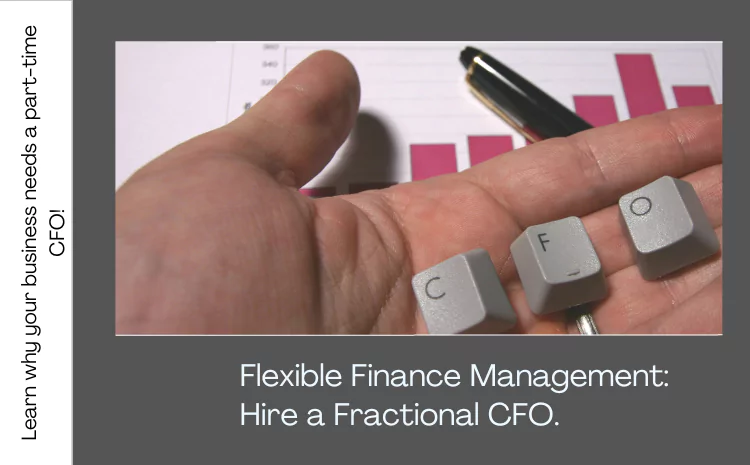In today’s fast-paced business world, managing finances flexibly is crucial for success. Flexible finance management helps businesses adapt to changing market conditions, control spending, and make informed decisions. This article explores how to implement flexible financial management in your business effectively.
Key Takeaways
- Flexible financial management helps businesses adapt to changing market conditions.
- Effective financial planning and budgeting are essential for financial flexibility.
- Utilizing tools and strategies can enhance financial management.
Introduction
Managing finances can be challenging, especially in an unpredictable economy. Businesses need to be agile and ready to respond to changes quickly. This is where flexible financial management comes in. It allows businesses to adjust their financial strategies as needed, ensuring stability and growth.
What is Flexible Financial Management?
Definition
Flexible financial management involves adapting financial strategies to meet changing business needs and market conditions. It includes planning, budgeting, and managing finances in a way that allows for quick adjustments.
Benefits
- Adaptability: Businesses can respond swiftly to market changes.
- Control: Improved control over expenses and investments.
- Growth: Facilitates sustainable growth and profitability.
| Benefit | Explanation |
|---|---|
| Adaptability | Respond swiftly to market changes |
| Control | Improved control over expenses and investments |
| Growth | Facilitates sustainable growth and profitability |
Implementing Flexible Financial Management
Financial Planning
Effective financial planning is the foundation of flexible financial management. It involves setting clear financial goals, analyzing current financial status, and creating strategies to achieve those goals.
Steps in Financial Planning
- Set Goals: Define short-term and long-term financial objectives.
- Analyze: Assess your current financial situation.
- Strategize: Develop a plan to achieve your goals.
| Step | Description |
|---|---|
| Set Goals | Define short-term and long-term financial goals |
| Analyze | Assess current financial situation |
| Strategize | Develop a plan to achieve financial goals |
Flexible Budgeting
A flexible budget adjusts according to actual business activity levels. Unlike a static budget, it can be modified as conditions change, providing a more accurate financial picture.
Benefits of Flexible Budgeting
- Realistic Planning: Reflects actual business performance.
- Cost Control: Helps in managing business spending efficiently.
- Forecasting: Enhances accuracy in financial forecasts.
| Benefit | Explanation |
|---|---|
| Realistic Planning | Reflects actual business performance |
| Cost Control | Helps in managing business spending efficiently |
| Forecasting | Enhances accuracy in financial forecasts |
Managing Cash Flow
Managing cash flow effectively ensures that a business has enough funds to meet its obligations. This involves monitoring cash inflows and outflows and planning for future cash needs.
Strategies for Managing Cash Flow
- Monitor: Regularly track cash flow.
- Forecast: Predict future cash needs.
- Control Costs: Implement cost-control measures.
- Diversify Income: Explore multiple income streams.
| Strategy | Description |
|---|---|
| Monitor | Regularly track cash flow |
| Forecast | Predict future cash needs |
| Control Costs | Implement cost-control measures |
| Diversify Income | Explore multiple income streams |
Financial Tools and Software
Utilizing financial tools and software can enhance flexible financial management. These tools help automate processes, track expenses, and generate financial reports.
Popular Financial Tools
- QuickBooks: For accounting and bookkeeping.
- Xero: Cloud-based accounting software.
- FreshBooks: For invoicing and expense tracking.
| Tool | Use |
|---|---|
| QuickBooks | Accounting and bookkeeping |
| Xero | Cloud-based accounting software |
| FreshBooks | Invoicing and expense tracking |
Financial Flexibility in Business
Importance of Financial Flexibility
Financial flexibility allows businesses to:
- Seize Opportunities: Quickly invest in new opportunities.
- Mitigate Risks: Prepare for economic downturns.
- Maintain Operations: Ensure smooth operations during financial stress.
| Advantage | Explanation |
|---|---|
| Seize Opportunities | Quickly invest in new opportunities |
| Mitigate Risks | Prepare for economic downturns |
| Maintain Operations | Ensure smooth operations during financial stress |
Strategies to Enhance Financial Flexibility
- Maintain Liquid Assets: Keep assets that can be quickly converted to cash.
- Diversify Investments: Spread investments across different sectors.
- Manage Debt: Keep debt levels manageable.
- Build Reserves: Save for unexpected expenses.
| Strategy | Description |
|---|---|
| Maintain Liquid Assets | Keep assets that can be quickly converted to cash |
| Diversify Investments | Spread investments across different sectors |
| Manage Debt | Keep debt levels manageable |
| Build Reserves | Save for unexpected expenses |
Conclusion
Flexible financial management is vital for business success in today’s dynamic environment. By implementing effective financial planning, flexible budgeting, and cash flow management, businesses can achieve greater financial flexibility. Utilizing financial tools and maintaining a proactive approach to managing finances can help businesses navigate challenges and seize opportunities.
By understanding and applying these principles, businesses can ensure financial stability and growth, making them better equipped to thrive in an ever-changing market.

Mark Thompson, a seasoned pest controller, is renowned for his expertise in keeping homes and businesses free from unwanted intruders. With a passion for environmental sustainability and a deep understanding of pest behavior, Mark has become a trusted authority in the industry.
